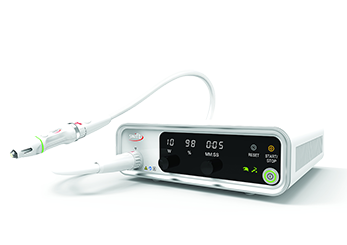Swift Treatment
Swift is a new medical technology that uses microwave energy to treat verrucas and skin lesions. It was developed in the UK and is now licensed for use in podiatry and dermatology. Swift works by delivering microwave energy to the affected tissue through a special probe. The microwaves heat up the tissue, destroying the verruca or skin lesion. The same fundamental power that powers Swift is also being used to treat lung, liver, kidney, and breast cancer.


What to expect from this treatment?
Discuss your concerns
We will make a full assessment and discuss whether Swift treatment can help you.If you have tried various verruca treatments to no effect, then Swift microwave energy might be for you.
Precautions include:
- The presence of metal in your foot or ankle.
- If you wear a pacemaker.
- If you have poor or limited healing capacity because of neuropathy or peripheral circulation.
- Patients who are immunosuppressed.
- Pregnancy – the effect of verruca/e treatment is reduced during this time.
- Treatment of young children.
- Patients with a low pain threshold.
Treatment Protocol
During the Appointment:
- Your podiatrist may remove some of the hard skin on the verruca before treatment.
- The Swift probe is then held in contact with the skin for about 3 to 5 seconds. The sensation is similar to an injection or scratch, and it usually only lasts for 2 to 3 seconds.
- There is no need for anesthesia or a dressing.
After the Treatment:
- In some cases, the treated area may feel sore, but it should not prevent you from doing your usual activities.
- You may experience some tenderness or redness at the treatment site, but this should subside within a few days.
- If you experience any pain or discomfort that is severe or does not go away, please contact your podiatrist.
How Many Treatments would I need?
The number of Swift treatment sessions you need will depend on how your body responds to the treatment. Most people need 3 sessions, but some people may need more. The sessions are usually 4 weeks apart. Your podiatrist will be able to discuss this with you and recommend the best course of treatment for you.

